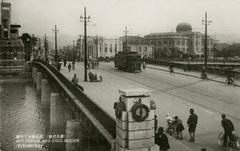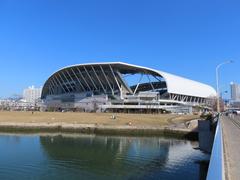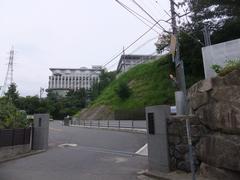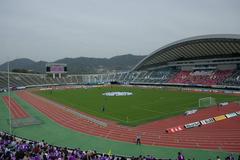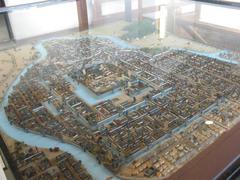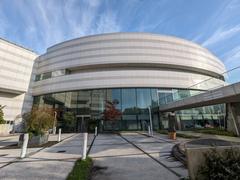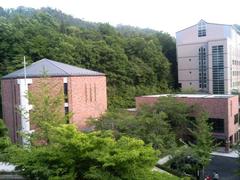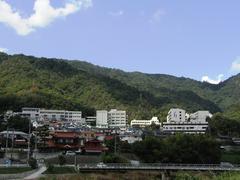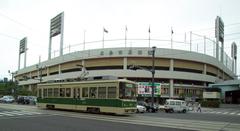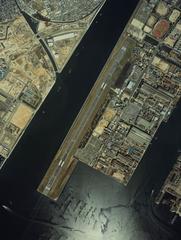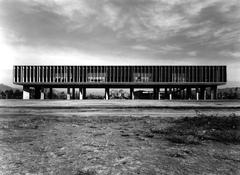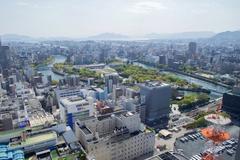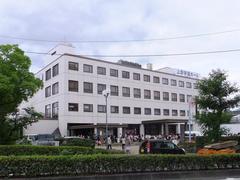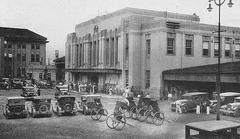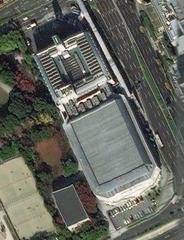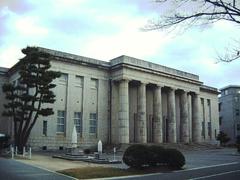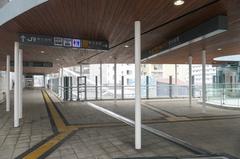
Ibaraichi Station Hiroshima: Visiting Hours, Tickets, and Nearby Historical Sites Guide
Date: 04/07/2025
Introduction
Nestled in the tranquil northern countryside of Hiroshima Prefecture, Ibaraichi Station (井原市駅) stands as a gateway to both scenic rural landscapes and the deep historical roots of the region. Located on the JR West Geibi Line in Asakita-ku, Hiroshima City, Ibaraichi Station is more than just a transit point—it is a living testament to the area’s evolution from its ancient agricultural beginnings, through periods of modernization and resilience, to its current role connecting Hiroshima’s urban and rural communities. With its proximity to significant archaeological sites and its enduring traditional architecture, the station offers visitors a unique lens through which to explore Hiroshima’s layered past and vibrant present. This comprehensive guide provides essential information on visiting hours, tickets, accessibility, nearby attractions, and travel tips for an enriching journey to one of Hiroshima’s rural gems (Hiroshima City Overview; Explore Hiroshima; Japan Travel Guide).
Table of Contents
- Introduction
- Historical Background
- Visiting Ibaraichi Station: Practical Information
- FAQs
- Conclusion
- Visual Resources and Further Reading
- Sources
Historical Background
Early Development and Regional Context
The area around Ibaraichi Station is rich in history, evidenced by archaeological sites such as the Nakaoda and Unagiyama Kofun burial mounds, dating back to the Kofun period (3rd–7th centuries CE) (Hiroshima City Overview). During the Edo period (1603–1868), the Asano clan oversaw agricultural and commercial growth in Hiroshima, with the Ota River supporting local livelihoods (Explore Hiroshima).
The Arrival of the Geibi Line
The Meiji era’s push for modernization led to the construction of the Geibi Line, which was pivotal in connecting Hiroshima with its rural hinterlands. Established in 1915, Ibaraichi Station became a vital link for transporting agricultural goods, timber, and facilitating cultural exchange (Japan Travel Guide).
Wartime Significance and Postwar Recovery
Though outside the direct blast radius of the 1945 atomic bombing, the Geibi Line and Ibaraichi Station were instrumental in postwar relief and recovery (Explore Hiroshima). The station played a crucial role in reconnecting outlying communities and supporting Hiroshima’s restoration as a symbol of peace (Explore Hiroshima).
Modernization and Community Role
Today, Ibaraichi Station serves commuters, students, and travelers eager to experience Hiroshima’s countryside. The surrounding landscape features rice paddies, traditional farmhouses, and shrines. The station is a starting point for hiking trails and access to regional festivals (Japan Travel Guide).
Preservation and Cultural Importance
Ibaraichi Station retains its original wooden architecture, attracting railway enthusiasts and visitors seeking authentic rural experiences. Seasonal events such as cherry blossom viewings and rice harvest festivals highlight its continuing role in local culture.
Visiting Ibaraichi Station: Practical Information
Visiting Hours and Accessibility
- Operating Hours: The station operates according to the Geibi Line timetable, typically from 6:00 AM to 10:00 PM. Confirm current schedules on the JR West official website.
- Accessibility: Facilities are basic. The station is at ground level, but some platforms may have steps or uneven surfaces. Wheelchair users should plan ahead and may require assistance.
Tickets and Fares
- Ticket Purchase: Tickets are available at automated machines. IC cards (ICOCA, Suica, PASMO) are accepted.
- Fares: A one-way ticket from Hiroshima Station is approximately 500–700 yen.
- Rail Passes: Japan Rail Pass and regional passes cover the Geibi Line—confirm eligibility before travel.
How to Get There
- By Train: From Hiroshima Station, take the Geibi Line northbound. The journey takes approximately 45–60 minutes.
- By Bus or Taxi: Local buses connect Ibaraichi to nearby towns, but services are infrequent. Taxis should be pre-arranged if traveling beyond train schedules (Nomadic Matt).
Station Facilities
- Sheltered waiting area with benches
- Automated ticket machines
- Restrooms (basic)
- Bicycle parking
Note: The station is unstaffed and has no shops or coin lockers.
Exploring Ibaraichi and Surroundings
Local Atmosphere
Upon exiting the station, visitors are greeted by peaceful rural scenery—rice paddies, small farms, and traditional homes. Local shops and eateries are nearby but have limited hours. Spring cherry blossoms and autumn foliage are particularly picturesque.
Nearby Attractions
- Sandankyo Gorge: A scenic spot for hiking and boat rides, accessible by local bus or car (The Broke Backpacker).
- Saijo Sakagura Street: Renowned for sake breweries, a short train ride away (The Tourist Checklist).
- Onomichi: A historic port town with temples and cycling routes (Japan Guide).
- Local Festivals: Seasonal events like the rice harvest festival and Obon provide immersive cultural experiences.
Photography and Event Tips
- The station’s vintage platform and rural backdrops are ideal for photography.
- Arrive early for cherry blossom or autumn foliage shots.
- Check local tourism sites for event schedules.
Frequently Asked Questions (FAQs)
Q: What are Ibaraichi Station’s operating hours?
A: The station is open during train service hours, roughly 6:00 AM to 10:00 PM. Always verify times on the JR West website.
Q: How can I buy train or bus tickets?
A: Use automated machines at the station or IC cards. Bus tickets can be purchased onboard or at select kiosks.
Q: Is Ibaraichi Station wheelchair accessible?
A: Accessibility is limited; there may be steps or uneven surfaces. Contact JR West in advance for assistance.
Q: Are guided tours available?
A: No regular tours start at the station, but local tourism offices may offer information on events and excursions.
Q: When is the best time to visit?
A: Spring (cherry blossoms) and autumn (fall foliage) are the most scenic and comfortable seasons.
Conclusion
Ibaraichi Station offers a unique blend of historical significance, rural tranquility, and access to some of Hiroshima’s lesser-known cultural treasures. Whether you are seeking peaceful hikes, vibrant festivals, or a window into Japan’s agricultural heritage, this station serves as a gateway to enriching discoveries. Prepare by checking train schedules, bringing cash, and embracing the slower pace of rural Japan. For real-time travel updates and personalized itineraries, download the Audiala app and follow us for the latest Hiroshima travel insights.
Visual Resources and Further Reading
For maps, images of Ibaraichi Station, and virtual tours, visit JR West’s official website and local tourism portals. Consider exploring related articles on the Geibi Line, Hiroshima’s city attractions, and rural travel tips to enhance your experience.
Sources
- Hiroshima City Overview (Hiroshima City Government)
- Explore Hiroshima: Hiroshima History Timeline (Explore Hiroshima)
- Explore Hiroshima: Hiroshima Bombing Facts (Explore Hiroshima)
- Japan Travel Guide: Hiroshima Complete Guide (Japan National Tourism Organization)
- JR West Official Website (West Japan Railway Company)
- Sandankyo Gorge (The Broke Backpacker)
- Saijo Sakagura Street (The Tourist Checklist)
- Onomichi (Japan Guide)
- Nomadic Matt Hiroshima Guide (Nomadic Matt)


